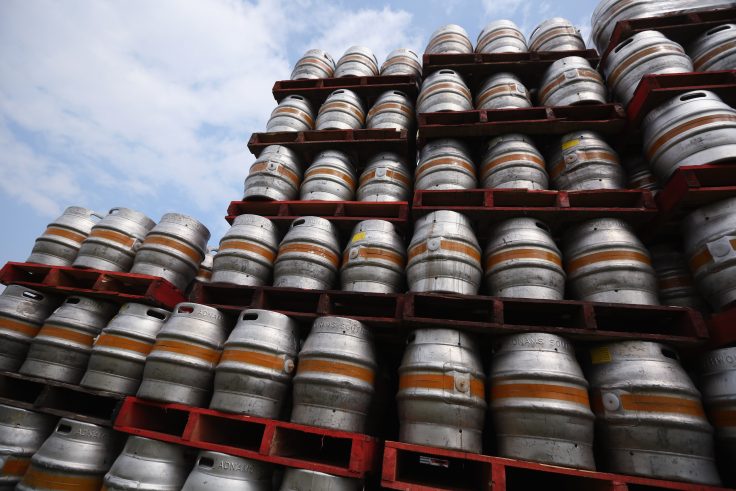There was an outpouring of grief when the Wall Street Journal ran the headline: "A $1 Billion Problem Is Brewing." Or at least there was an outpouring of grief from those of us who love beer. For when the pandemic shut down bars, restaurants, arenas, and stadiums, it cost the industry $1 billion and about 10 million gallons in lost suds.
Ten. Million. Gallons. The number is so staggering that I asked Lester Jones, who came up with it, to break it down. Jones, who is the chief economist for the National Beer Wholesalers Association, said his estimate takes into account kegs ranging from the standard 15.5 gallons all the way down to the 1/6 barrels, known as sixtels. Besides microbrewers who favor smaller-sized kegs, Jones said, "many beer-centric bars that have a large selection of beers on tap—think 40-plus taps—stick to the 1/6 barrel format to keep consumers coming back to taste new beers." He also reminded me that "every time a tap goes dry at a bar, there are one or two additional kegs sitting nearby to replace that empty keg."
Making matters worse, there's no easy way to dispose of it. Ten million gallons can't be poured down the drain because of environmental factors. But it's also a matter of principle. Why dump when we can consume? Belgians have been asked by their government to eat more potatoes, lest they go to waste. It's time for Americans to take a similar step—by stepping up our game.
We need to drink more beer. It's just a matter of how: Can we stand in line six feet apart at our nearest watering hole, containers at the ready? A panel convened last week by the R Street Institute discussed the impact of the coronavirus on the booze industry and addressed this very question.
"There really is no secondary market for keg beer," said Jim McGreevy, president and CEO of the Beer Institute. "Moreover, there's an issue of decanting the beer, getting the beer out of the kegs when they're not in a retail location. There's environmental issues, there's safety issues, so it's unfortunate."
"We're not necessarily going to take that half-used keg of beer and try to sell it," added Ryan Krill, the CEO and cofounder of Cape May Brewing in New Jersey. "The reality is that people just don't really buy that many kegs of beer at home, though they certainly have that option."
It is an option Americans must now embrace. "We already have beer that's in inventory, that's in kegs, that's at our warehouse, that we're looking at the date codes," said Krill. The microbrewery typically sells seven to nine kegs of varying sizes a week during the high season. At other times it's only one or two. Nationwide, the volume of keg beer that goes to private use (including catering) is less than 4 percent.
We can do better.
Keg beer can last a good two months in proper conditions. And while the price seems hefty, starting at about $100 and often higher, you're getting 15.5 gallons, which translates to 1,984 ounces—meaning 165 cans of beer. A $200 keg would then only cost you $1.21 per 12-ounce beer. In this time of economic uncertainty, you'd be hard-pressed to find a better value.
We do, of course, have our health to consider. Americans on average consume 2.3 gallons of booze annually. And while there have been reports of an uptick in drinking during the quarantine, we're still a far cry from 1830, when we drank a whopping 7.1 gallons of alcohol per year. Once again—we can do better.
Beer will be lost—there's no way around that. As Jim McGreevy said during the R Street panel, "We hate to see all this great beer go to waste. But that's the prospect we have the longer this goes on."
That alone should force the economy to reopen. In the meantime, Americans can do their part to prevent this from being a total loss. There are still plenty of untapped kegs collecting dust in warehouses, ready to be purchased. In the immortal words of a Supreme Court justice, "We drank beer. I liked beer. I still like beer." Don't you?
